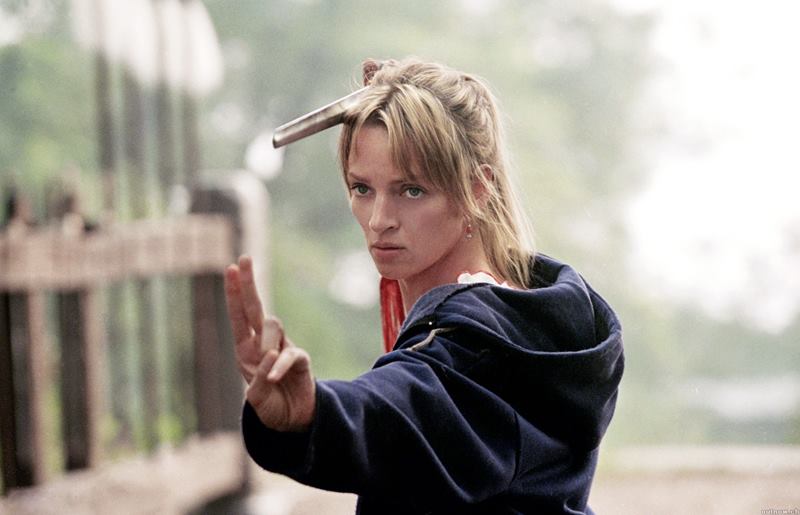
Film Critic Deeta Mahbubani explores why Quentin Tarantino abandoned his final film
In the vibrant heart of Hollywood’s creative landscape, Quentin Tarantino stands as a luminary, a master of cinematic storytelling whose name evokes both admiration and controversy in equal measure. With a career spanning decades, Tarantino has carved out a unique niche, weaving intricate narratives that captivate audiences and challenge the conventions of filmmaking.
From the gritty streets of “Reservoir Dogs” to the sprawling vistas of “Once Upon a Time in Hollywood,” Tarantino has consistently pushed the boundaries of storytelling, earning accolades and adoration from critics and audiences alike. His films are not mere entertainment; they are cultural touchstones, sparking debates, inspiring homage, and leaving an indelible mark on the cinematic landscape.
Yet, as reports swirl of his abandonment of “The Movie Critic,” supposedly his final cinematic opus, the very essence of artistic integrity comes under scrutiny. For Tarantino, whose name has become synonymous with bold artistic choices and uncompromising vision, the decision to shelve a project is not taken lightly. It raises questions about the nature of creative freedom and the responsibilities that come with wielding such immense influence in the industry.
Tarantino’s proclamation of limiting himself to 10 films has been a rallying cry for both praise and scepticism. On one hand, it could be interpreted as a bold declaration of artistic discipline, a pledge to maintain a pristine body of work unsullied by mediocrity. After all, his filmography reads like a hall of fame, with each entry bearing the unmistakable stamp of his inimitable style and vision.
Tarantino’s decision to impose a limit on his output seems to speak to a deeper commitment to artistic integrity. In an industry where commercial interests often overshadow creative vision, he has steadfastly refused to compromise his artistic principles for the sake of box office success. Instead, he has remained true to his unique vision, crafting films that are as audacious as they are unforgettable.
However, beneath the surface lies a deeper question: does this self-imposed limit truly embody artistic integrity, or is it merely a facade to uphold a curated image? In the crucible of creativity, should boundaries be imposed, or should the artist be free to roam the boundless expanse of imagination?
First, let’s delve into the essence of “The Movie Critic.” Set against the backdrop of 1977 California, the film promised to be a departure from Tarantino’s trademark tales of blood-soaked vengeance and pop culture references. Inspired by his own experiences as a teenager loading porn magazines into vending machines, the movie aimed to peel back the layers of the film industry, revealing the seedy underbelly beneath the glitz and glamour.
At its core, “The Movie Critic” was a character study, offering a glimpse into the life of a real-life film journalist who wrote reviews for a porn magazine. With Brad Pitt slated to star, rumours swirled of a narrative that would weave together elements of satire, comedy, and social commentary, offering a window into a bygone era of cinema.
Indeed, the prospect of Tarantino tackling such unconventional subject matter held tantalising promise. With his trademark blend of razor-sharp dialogue, kinetic action, and unflinching brutality, “The Movie Critic” had the potential to be a tour de force, a testament to the director’s versatility and audacity.
“His films are not just entertainment, they’re cultural touchstones
As reports surface of Tarantino’s decision to abandon the project, questions arise about the true nature of artistic integrity. On one hand, his commitment to maintaining a limited filmography could be seen as a testament to his dedication to quality over quantity. By eschewing the temptation to churn out film after film, Tarantino ensures that each project receives the meticulous attention it deserves, sparing no expense in the pursuit of perfection.
Moreover, the notion of a director setting his sights on a finite number of films speaks to a deeper philosophy of creative restraint. In a world where excess often reigns supreme, Tarantino’s decision to impose limits on his output could be viewed as a noble attempt to resist the siren call of commercialism, to carve out a space for genuine artistic expression amidst the cacophony of Hollywood’s ever-churning machine.
Yet, for all its virtues, Tarantino’s approach also invites scrutiny. Critics argue that by rigidly adhering to a predetermined quota, he risks stifling the organic evolution of his creative vision. Rather than allowing ideas to gestate and mature naturally, he is bound by an arbitrary numerical threshold, forced to abandon potentially ground-breaking projects simply to meet his self-imposed quota.
“For all its virtues, Tarantino’s approach also invites scrutiny
The idea that a director would prioritise maintaining a curated image over genuine creative expression raises questions about the true motivations behind Tarantino’s decision. Is his commitment to a limited filmography driven by a genuine desire for artistic purity, or is it merely a calculated move to cultivate an aura of exclusivity and mystique?
In the end, the debate over Tarantino’s decision to abandon “The Movie Critic” is a microcosm of the larger conversation surrounding artistic integrity. While his commitment to quality and discipline is commendable, it also begs the question: at what point does artistic restraint become a hindrance rather than a virtue?
As the dust settles on Tarantino’s latest revelation, one thing remains clear: the true measure of artistic integrity lies not in adhering to arbitrary rules or quotas, but in the ability to harness the boundless potential of the creative imagination. It is about daring to dream, daring to defy, and daring to challenge the status quo. And in the ever-evolving landscape of cinema, it is those bold enough to embrace the unknown who leave the greatest legacy of all.
Enjoyed reading this article? Check out these other recent features from Redbrick Film:
‘Cocaine Werewolf’ Looks to Follow ‘Cocaine Bear’ by Example at Cannes Market | Redbrick Film

Comments